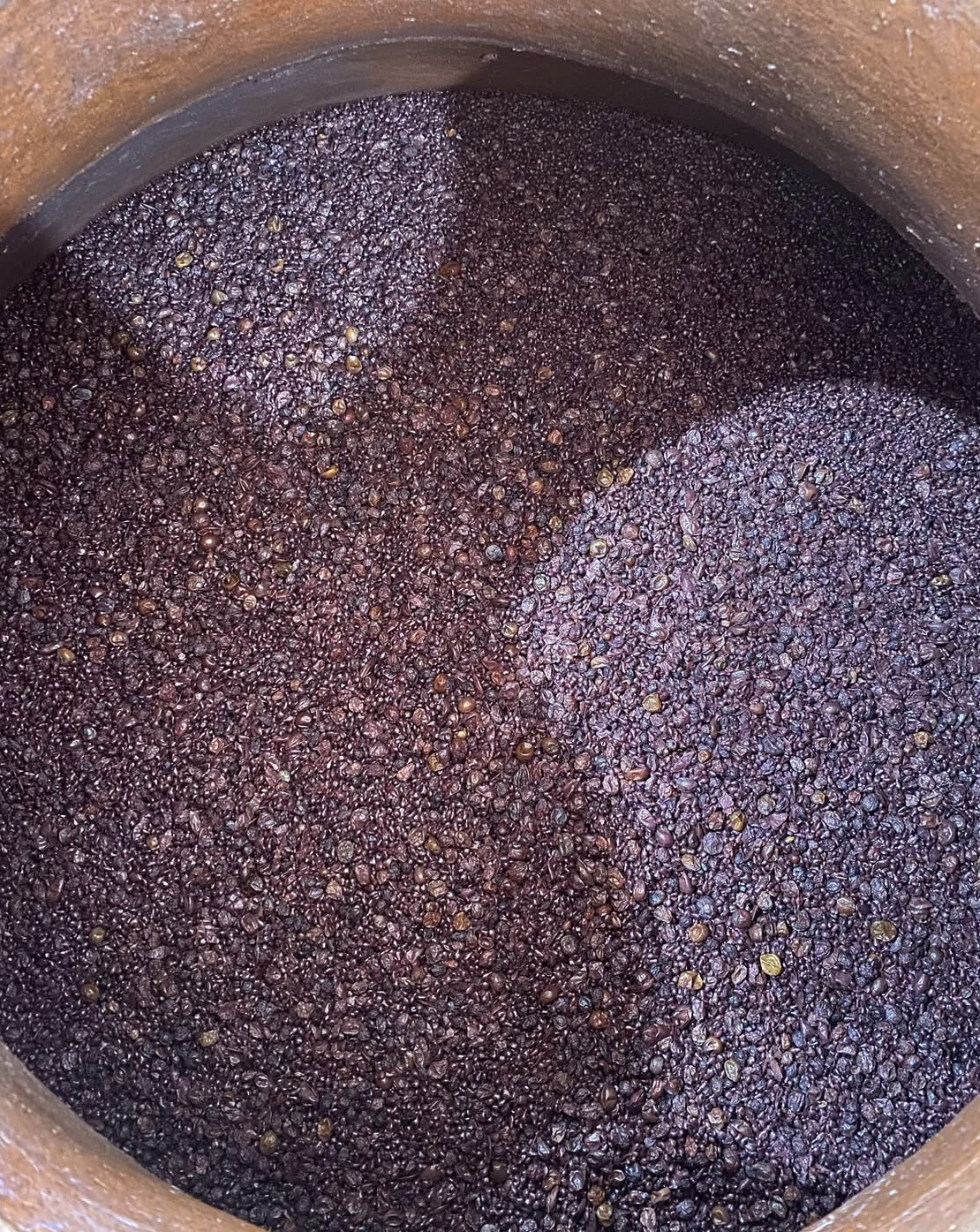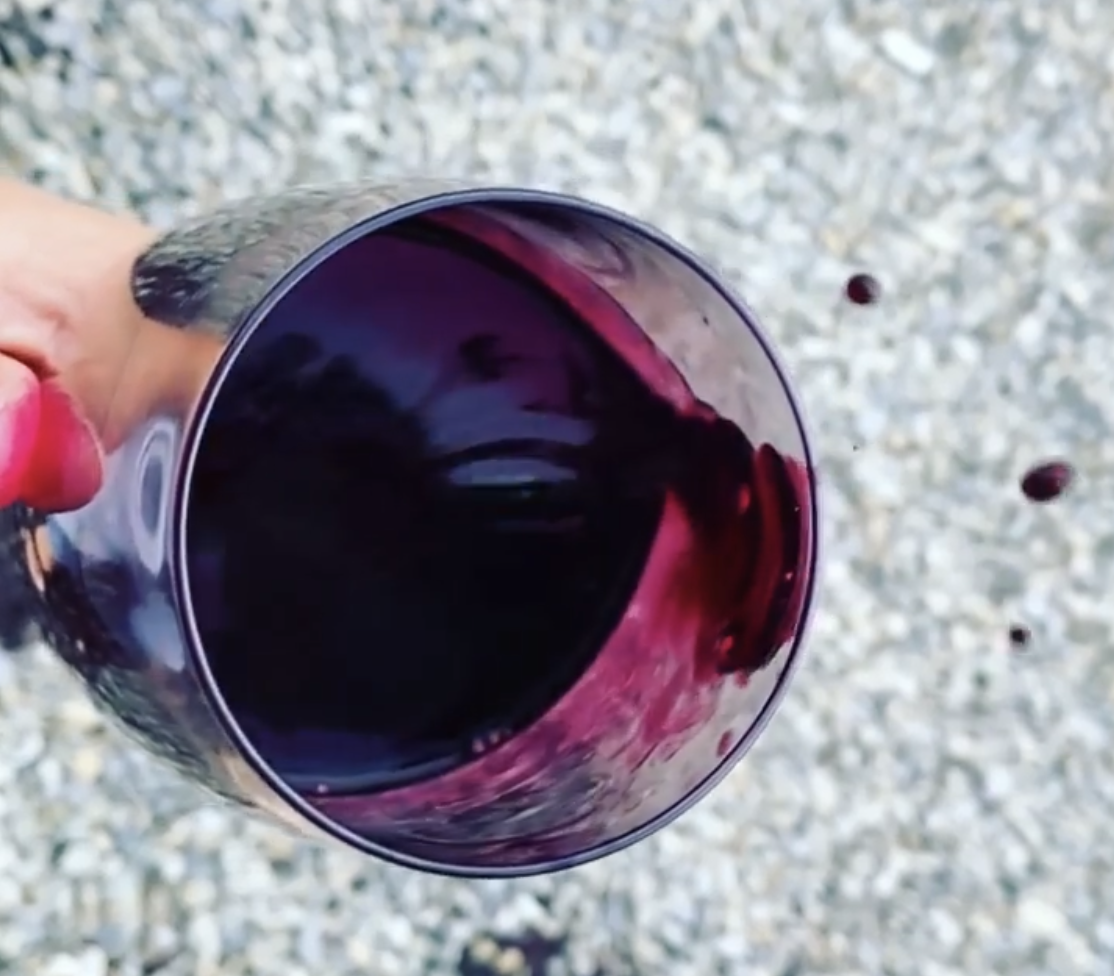The word Saperavi literally means “paint,” “dye” or “give color.” And boy, does it ever.
Pouring out a bold, opaque purple-red color, this native Georgian wine grape is a teinturier, or a rare red-skinned AND red-fleshed variety. This makes for a formidable finished wine — fascinatingly deep in color and flavor while still lifted and fresh.
Read on for more about wines from this ancient variety, how they get made in Georgia, and how they present themselves present-day.


Red grape skin AND red juice and flesh? Is that... normal?
Nope. Saperavi is incredibly unique in this way! The vast majority of red wine grapes have red skin but clear/white juice; the wines only pick up their red color by letting the juice soak with the crushed grape skins during fermentation, leaching out color, texture and flavor. But Saperavi grapes have red skins and naturally red juice on the inside! Bonus points: This makes wines from Saperavi naturally higher in antioxidants and heart-healthy resveratrol. After maceration and fermentation on the skins, a finished wine made from Saperavi is typically intensely deep red or even purple-black.


How are wines from Saperavi made in Georgia?
As with any wine grape, there are so many variations of winemaking that can be employed with Saperavi. A winemaker’s choices depend on their desired finished color, texture and flavor of the wine.
For traditional Georgian Saperavis (and other red grape varieties), the grapes are picked and then crushed, releasing the juices, which will typically soak on the skins, seeds and sometimes stems to draw out a richer color and structure. Next, the whole lot is scooped into tank, barrel, or traditional clay qvevri for fermentation. Because of the qvevri’s egg-shape, the heat of fermentation naturally circulates the juice and solids, coaxing out rich color and layers of texture and flavor.
When fermentation finishes, the solids naturally settle to the bottom of the qvevri, typically eliminating the need for fining, filtering, or adding any artificial preservatives. At last, the wine is siphoned out of the qvevri into bottles, ready for pure and delicious enjoyment.
If a lighter red or even rosé is desired, Saperavi’s natural red juice can be pressed quickly off the skins. Saperavi fermented in stainless steel tanks tends toward an edgier, more linear style and structure, whereas fermentation in barrel contributes more soft, plush texture and occasional baking spice flavors.


What do red wines from Saperavi taste like?
Saperavis are incredibly intriguing, complex, characterful wines. While Saperavis are usually fascinatingly deep in color and character, they’re also beguilingly lifted and mouthwatering, thanks to the grape’s naturally bright acidity.
Think of dark, bold, dry reds like Cabernet Sauvignon, Syrah, Malbec or Aglianico… but make it fresh, not overly sappy or slathered with oak.
Because of the fine-grained tannins in Saperavi, the wines open up and evolve beautifully with air and time; they also age extremely well. Saperavi’s flavors lean towards juicy blood orange, snappy pomegranate, ripe black cherry or cassis squeezed over smoked bay leaf, black peppercorn, spicy licorice and a hint of worn leather and tobacco.


What to pair with Saperavi?
Sure, the old adage of “pair red wine with red meat” works just fine, but we love pushing the boundaries of pairing Saperavi past barbecued meats, sausages and stews. Try smoking or grilling root vegetables, squash, mushrooms and eggplant to complement the wine’s bold and earthy flavors. Explore brothy beans layered with warm spices. Or play around pairing gooey or sharp cheeses slathered on crusty breads or crackers scattered with toasted nuts and seeds. Need inspiration? Check out our recipes page here.






